Whether you’re vegan, vegetarian, or simply looking to cut back on animal protein, you may be wondering which sources of plant-based proteins to include in your diet.
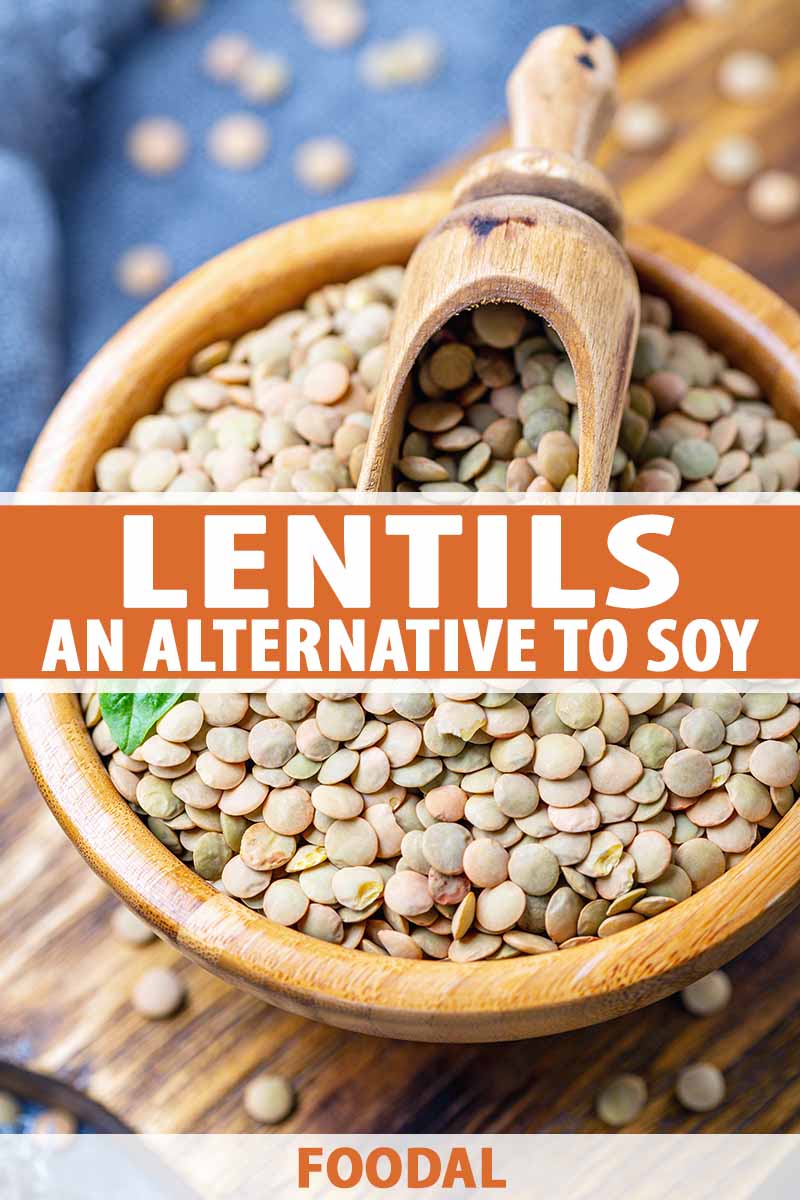
Lentils are budget-friendly legumes that are packed with nutrients. Yet, they often get overshadowed by a more popular plant-based protein source: soy.
Widely consumed around the world, soy products are popular among vegans, vegetarians, and omnivores alike. And while there are numerous benefits to eating soy, there are also some potential drawbacks, many of which have to do with compounds called phytoestrogens.
Here’s what’s to come in this article:
What You’ll Learn
Ready to get started? Let’s go!
What Are Phytoestrogens?
First, it’s important to define what we’re talking about.
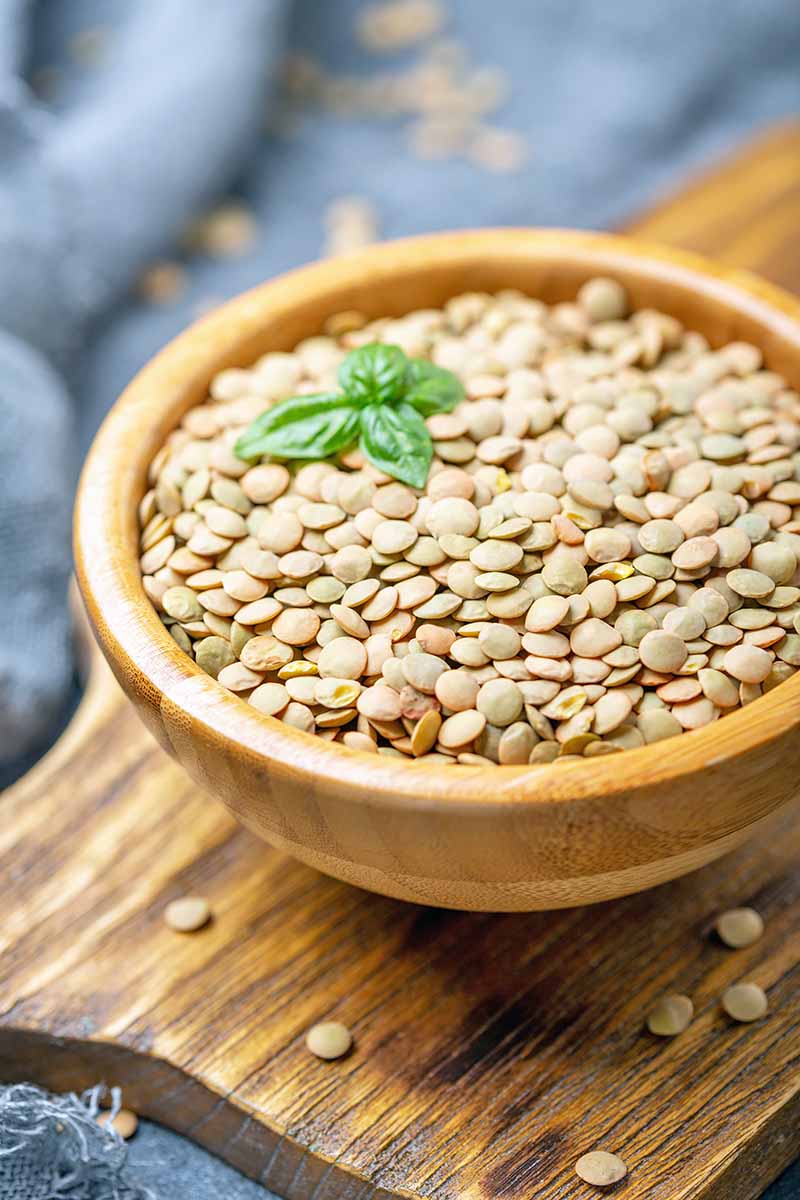
Phytoestrogens are a group of naturally occurring compounds that are found in numerous plant-based foods.
While the prefix “phyto” means plant, the “estrogen” part comes from the fact that its chemical structure resembles the structure of estrogen – a sex hormone present in both men and women.
There are many different phytoestrogens, each with their own unique effects in the body. Some of the most studied include:
- Lignans: found primarily in flax seeds, nuts, grains, and berries
- Isoflavones: found in high amounts in soybeans, but also in wine, grains, and berries
- Resveratrol: famous for giving red wine its health benefits, it’s also found in berries, chocolate, and peanuts
- Quercetin: found in numerous fruits, vegetables, and grains
Many of these phytoestrogens are also antioxidants, which help protect us against numerous chronic diseases including heart disease, some forms of cancer, and type 2 diabetes.
So then why are some people concerned about phytoestrogens?
As they have a similar structure to estrogen, phytoestrogens can interact with estrogen receptors in our cells, and either reduce or mimic the effect of estrogen in the body.
What this means in terms of health is not entirely clear and often controversial, as the research is quite mixed on whether or not consuming high amounts of phytoestrogens can increase the risk of breast cancer, impair thyroid function, and affect fertility.
While research generally supports moderate intake of high-phytoestrogen foods in healthy adults, those with hypothyroidism and women dealing with hormonal imbalances should be cautious of high soy intake, and speak with a registered dietitian or physician for personalized recommendations.
Phytoestrogens in Soy vs. Lentils
Again, while phytoestrogens do not need to be avoided completely, and may even have some health benefits, it’s a good idea to only consume moderate amounts of high-phytoestrogen foods such as soy.
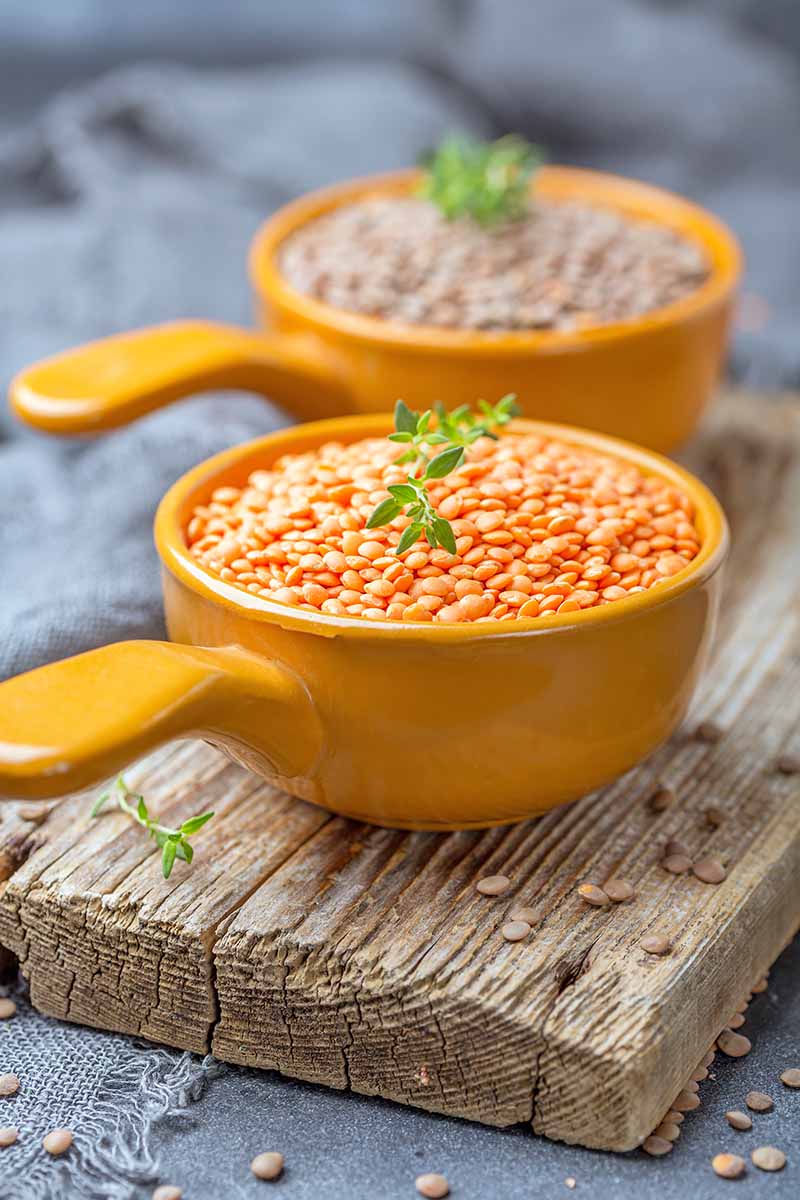
This is where our star ingredient comes in. While they also contain some phytoestrogens, the total quantity is much smaller than what’s found in soy.
For example, 100 grams of tofu contain 27150.1 micrograms of total phytoestrogens, which is 744 times more than what’s found in 100 grams of lentils (36.5 micrograms).
Plus, lentils have many other nutritional benefits that make them a great addition to a healthy diet.
Nutritional Benefits
Lentils, like soy, are a type of legume. You’ve probably seen bags of them in the grocery store next to the dried beans, or even pre-cooked in the canned foods aisle.
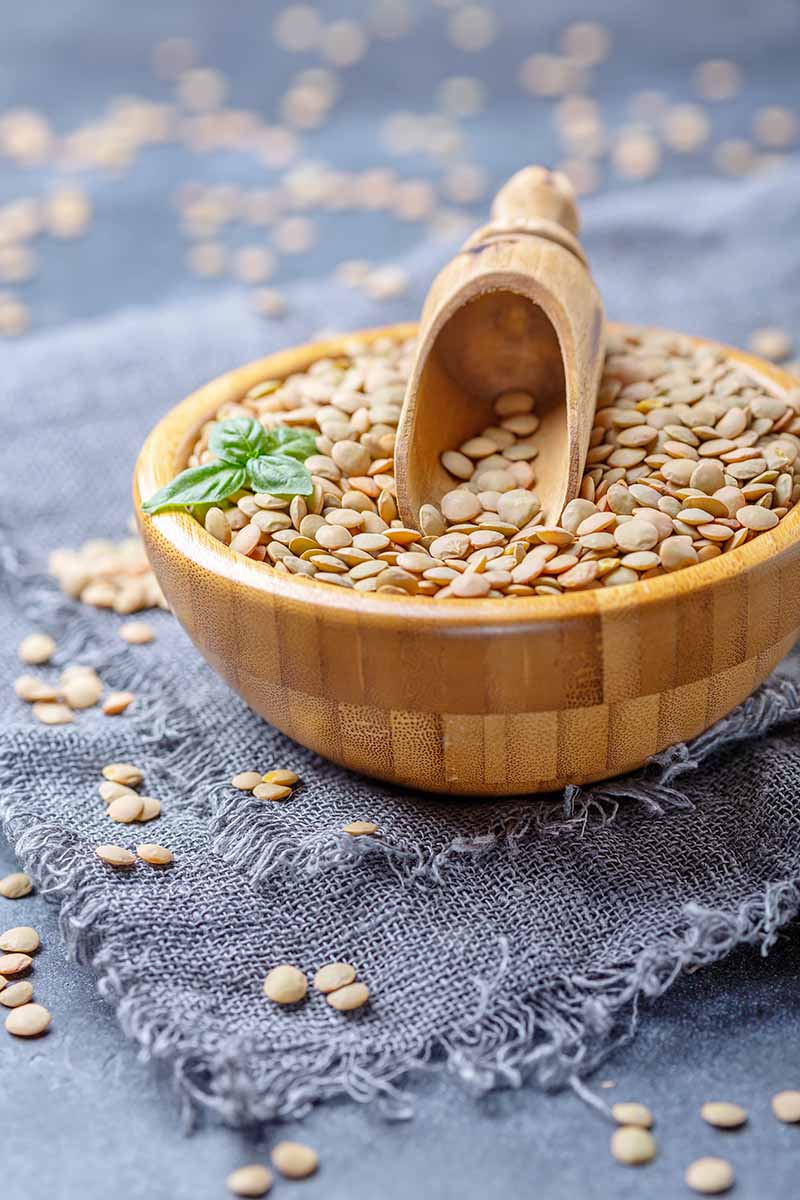
As with beans, these legumes come in a variety of different colors, each with slight differences in texture and color, but all highly nutritious. We’ll cover these in more detail later in the article.
Whatever the variety, one cup of cooked lentils provides around 230 calories, less than 1 gram of fat, and an impressive 18 grams of protein, making them an excellent plant-based substitute for animal protein.
They’re also very high in fiber, with one cup of cooked lentils providing 15 grams of dietary fiber – that’s more than 50% of many individuals’ daily fiber needs!
Additionally, they are an excellent source of numerous vitamins and minerals, including folate, thiamine, niacin, iron, magnesium, phosphorus, manganese, potassium, and copper.
And the best part? These nutritional benefits come in a budget-friendly package.
Lentil Varieties: Colors and Flavors
While all types of lentils are incredibly nutritious, they each have slightly different flavors and textures when cooked:
- Brown: the most common type, these have an earthy flavor and are super versatile, holding up well in soups but also easily mashed to make veggie burgers.
- Green: the longest-cooking type, they have a slightly peppery taste and remain quite firm after cooking. They’re also a good choice for soups (like in our Italian Lentil Soup!).
- Puy: also known as French, puys tend to have a darker color and smaller size than traditional green ones. They have a slight nutty and peppery flavor, and hold their shape well.
- Beluga: also known as black, they look almost like caviar once cooked, and have a thicker skin than other types. Taste-wise, they have a rich, earthy flavor.
- Yellow and Red: also called split, these are the sweetest in flavor with a slight nuttiness. They’re also quite soft and tend to get mushy when cooked.
Not to be confused with lentils, you’ll also commonly come across yellow split peas, and yellow split mung beans. Both members of the pea family, these are also nutritious options that are often served in a similar style, especially in Indian cooking.
Tips for Cooking
Unlike dried beans, lentils don’t typically need to be soaked before cooking.
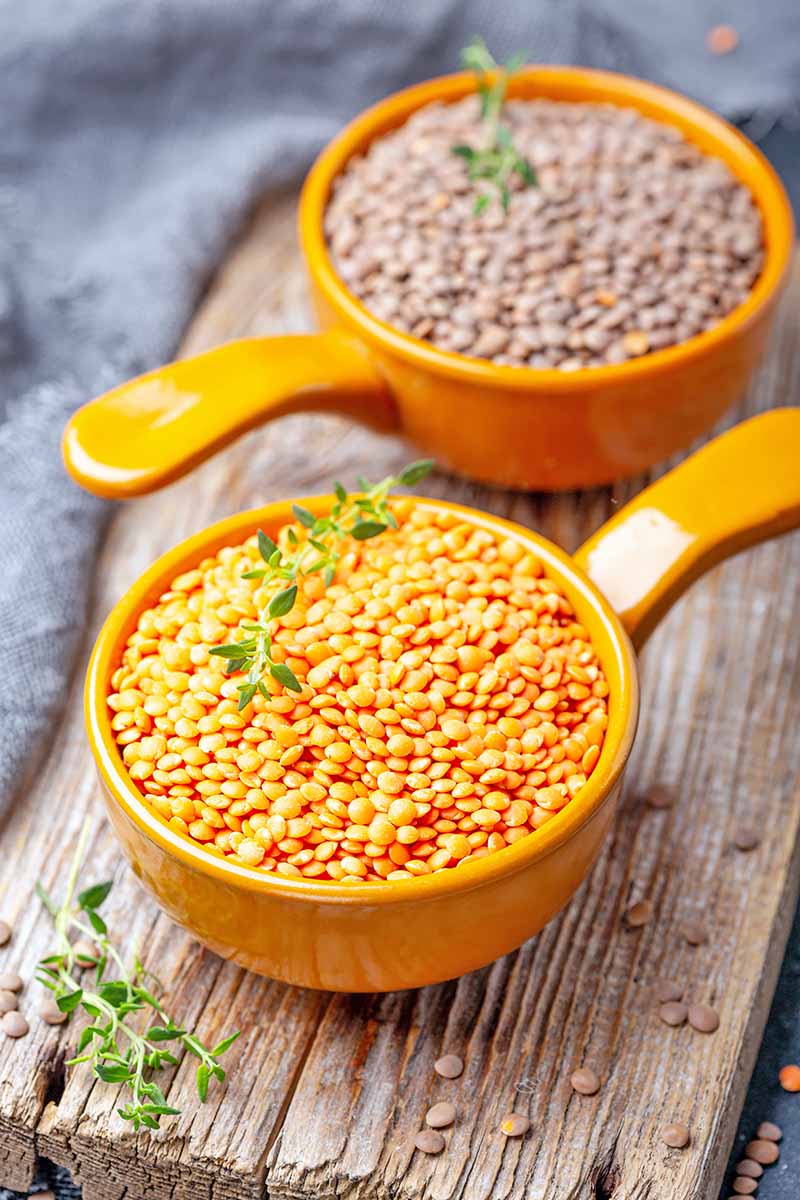
However, do contain compounds called antinutrients, which can impair the absorption of some minerals and may cause GI distress in certain individuals.
While the antinutrient content is significantly reduced during cooking, soaking overnight can help decrease these levels even further. As an added bonus, soaking can also cut the cooking time in half!
Regardless of whether you soak them or not, all types of dried legumes should be sifted through to remove any rocks or debris and rinsed well with cool water before cooking.
Once sorted and rinsed, they can be cooked on the stove with water or broth and any seasonings of choice until soft, but not mushy.
Different colors and varieties have slightly different cooking times, so it’s important to follow your recipe’s directions based on the type you’re using. This is especially true with the split type, which will cook more quickly than whole varieties.
As mentioned above, red and yellow varieties are often also referred to as “split.” They’re often found in Indian and Middle Eastern cuisines, and unlike other types, they cook much faster and tend to become slightly mushy when cooked. In certain recipes, this is a good thing.
Storing and Using Lentils
Keep dried lentils in an airtight container in a cool, dry place in your kitchen, such as a pantry or cupboard. When properly stored, they can last for up to 2-3 years.
So, how can you use these budget-friendly pulses?
Lentils are incredibly versatile. They add a filling heartiness to soups and stews, and can replace meat in a vegetarian shepherd’s pie, be mashed into a veggie burger patty, or even formed into meatless “meatballs.”
To get you started, here are a few of our favorite recipes on Foodal:
- Turmeric Red Lentil Soup with Kale
- Warm French Lentil Salad with Marcona Almonds and Goat Cheese
- Curried Brown Rice and Lentils
Enjoy the Delicious Nutritional Benefits
So, what’s the verdict? Are you ready to start cooking with lentils?
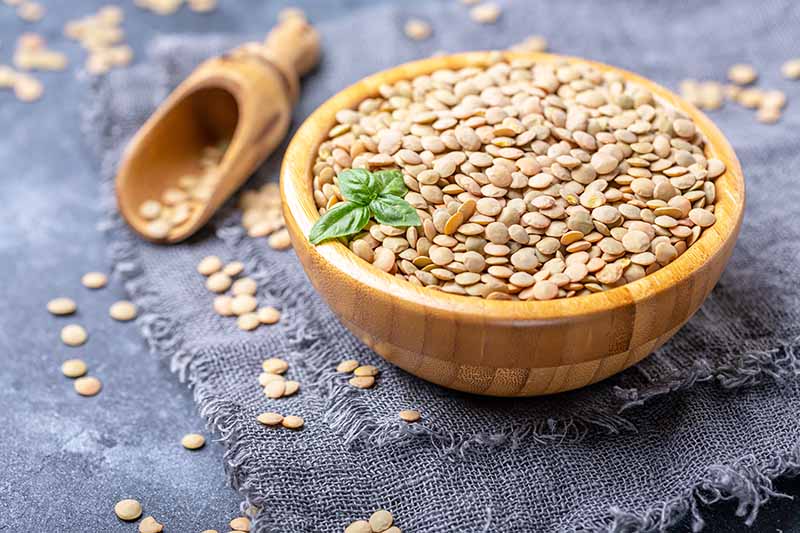
Whether you plan to use them as a protein-packed soy substitute in vegan meals or you’re just eager to try something new, these legumes are full of nutritional benefits, and they’re delicious in so many different types of recipes. Enjoyed cold in a salad, hot in a soup, stew, or dal, or added to a patty and fired up on the grill, it’s the perfect time to add this budget-friendly ingredient to your menu.
Are you already a fan, or is this ingredient new to you? We love hearing from you, so feel free to leave us a message in the comments below!
For even more information on various whole food ingredients and the part that they play in a healthy diet, add these articles to your reading list next:
- Amaranth: A Splendid Gluten-Free Alternative to Wheat
- Beyond Carrots: Foods for Good Eye Health
- Getting to Know Garbanzo Beans: A Closer Look at the Cute Chickpea
© Ask the Experts, LLC. ALL RIGHTS RESERVED. See our TOS for more details. Originally published on February 8, 2015. Last updated on December 30, 2019. With additional writing and editing by Allison Sidhu. Uncredited photos: Shutterstock
The contents of this article have been reviewed and verified by a registered dietitian for informational purposes only. This article should not be construed as personalized or professional medical advice. Foodal and Ask the Experts, LLC assume no liability for the use or misuse of the material presented above. Always consult with a medical professional before changing your diet, or using supplements or manufactured or natural medications.
About Kelli McGrane, MS, RD
Kelli McGrane is a Denver-based registered dietitian with a lifelong love of food. She holds undergraduate and master’s degrees in nutrition science from Boston University. As a registered dietitian, she believes in the importance of food to nourish not only your body, but your soul as well. Nutrition is very personal, and you won’t find any food rules here, other than to simply enjoy what you eat.

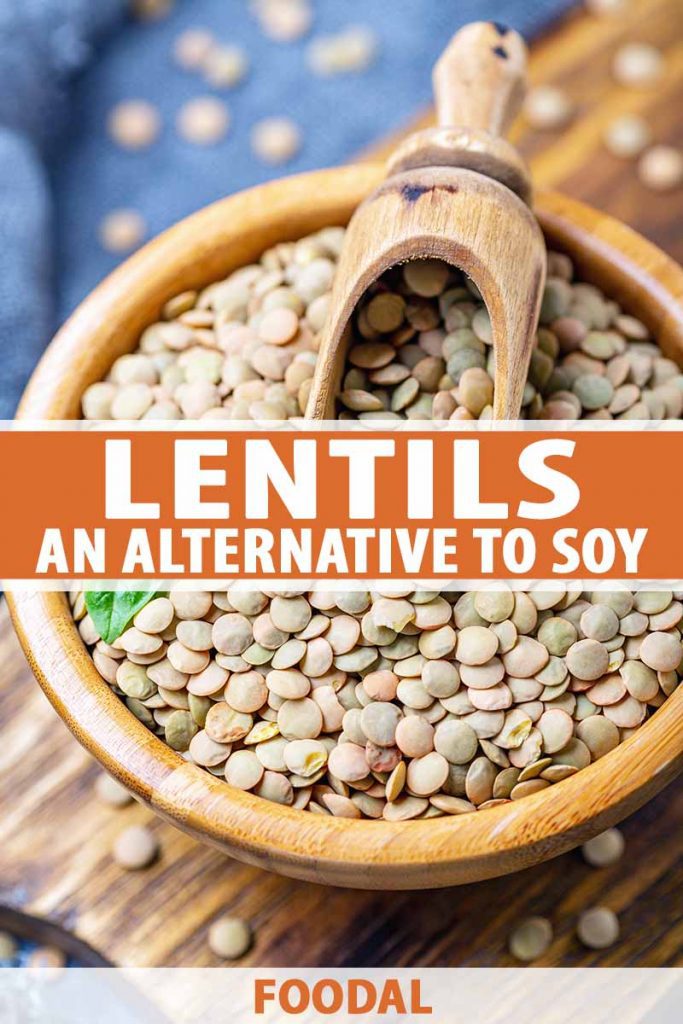



Thanks so much Lynn for sharing the lessons on phytoestrogens. It is valuable information that we should always share. A few years back, I suffered with fibroid tumors and learned all about it. I was able to shrink my fibroids and I improved my diet along the way!
I love lentils cooked with carrots, onions and celery. I also make lentil burgers, where I soak the lentils overnight, then blend them with seasonings, mix with oil and breadcrumbs and this makes some delicious, hearty burgers. It is great to eat nutritiously and enjoy it so much!
Lentils were a staple part of my diet at college – I couldn’t afford much else! I especially like bean soup or stew with some fresh crusty bread. I’ve yet to try a legume based burger though and would love to see a recipe for them here at some point!
It’s not necessarily a bad thing, since lentils are really tasty too if prepared right. My favorite food is made with lentils. Lentil soup with tomato in it is very good and also healthy.
I have a love-hate relationship when it comes to anything legumes…the bloating is just not my cup of tea but when i read any topic in here concerning the said legumes…be it lentils or beans or e.t.c in the legumes department…i find myself reconsidering my strict options…i just might indulge in some this week..who knows 😉
Diane, you should try more lentils rather than beans. They do not have nearly as many “side effects” with gas build up and ummm “release.”
I’m a vegetarian and so I eat a lot of soy. Kind of concerning to hear about the negative side of eating to much soy. I think I will consider lentils as an alternative more. I don’t like the way they taste without any seasoning though, so I think I might look for some indian dal recipes :).
I think on the internet you’ll find that for every article pointing out the downsides of soy, you will find an equal number of articles putting forward the opposite argument and mentioning it comes from misunderstandings etc. But the point made in this article is true, though — we should vary our sources of energy and lentils are delicious! You should try a “no-meat” taco lentil recipe, had this last week, was delicious! 🙂 Anything Indian is always top too. 🙂
I never really liked lentils until someone made me a tomato and lentil soup as I was the only vegetarian on a group holiday and everyone was envious of my soup as it was excellent. It was tasty and nutritious and also helped keep me regular, as it was so high in fiber.
I’m not great at using lentils in my cooking, but I do like adding some of the red ones in soup and also in burgers or in a classic loaf with soya mince. Mix the two together for a high fiber and protein dish.
Lentils have a cleansing effect on the bowels. I’d know, since I feel much better in the loo after eating some dhal.
I would like to find out, though, how would different kinds of lentils have different effects for the health? This may encourage people to have a variety of lentils and may make for a more flavorful experience, don’t you think?
Again, a well written article. Thanks and more power. =)
jdzla,
I’m not sure if the different varieties have many differences when it comes to nutrition. However, for taste I generally mix the brown and greens together (just in case they have different micro-nutrients) as I like most of my lentils to remain whole. I’ll also and some red ones that I use to thicken up the soup. I do cook mine with lean pork so there is no lack of flavoring. I also use copious amounts of onion, onion powder, fresh crushed garlic or powder, bay, and lots of freshly ground black pepper.
That sounds delicious! I’ve never heard of anyone mixing the different colors/types of lentils together. When my friend would make it she tends to just stick with one type of lentil. She claims that the other lentils cook differently and will make the taste go in a complete different direction.
I don’t know anything about lentils in general so I just believed her, but it seems like she may be wrong!
Do you ever add any ethnic spices such as tumeric to your recipe? Or curry powder to make a curry-copy-cat?
Lentils are definitely underrated so I’m glad you are promoting them. I had never eaten them much until I visited India, and now I’m a huge fan. They’re cheap and lend themselves well to so many other flavors. People should definitely give them a go.
This is a very good recommendation, they’re cheap to buy and easy to cook. If I were in a cash-strapped situation, lentils would definitely be one of my first choices for its nutritional value and low expense.
I’ve yet to give them a try as a protein replacement, such as in burgers but it’s definitely something I’m looking at in the future, considering all my vegetarian friends!
Lentils are great! I love that they don’t need to be soaked and are so versatile. Regarding your article however– they are a good source of protein, but not of complete protein (as opposed to soy, which is a complete protein). Bread rounds it off quite well, though, and so does rice, for instance!
Where I live though, 500g of lentils sells for a few euros (anywhere between 1.70 and 3 euros, really). Wish we could have it as cheap as you seem to have it!
My friend lived in India for a good chunk of her life and she would often use lentils in her cooking. I honestly wish I could’ve gotten her recipe from her because whatever she did to the lentils were so delicious!
What spices do you recommend for lentils, if any? I know most Indian-based spices are good but are there any other ones that you like to try?
Lentils are a very underrated asset to the kitchen cupboards of any coo, no just vegetarian or vegan ones. They offer many ways to add to the taste and nutritious value of meal very quickly and very easily.
I have recently purchased a cook book that is solely about using lentils in meals and it has been a great eye opener adding to my ever expanding spice rack and weighing my shelves down with all sorts of new products from around the world. It is great fun to dip in and out of it picking a recipe at random. I never fail to find a new pulse that I have never heard of!
Variety is the key to life, and pulses offer plenty of variety.
I’ve always loved beans and legumes, but am fairly new to lentils. I have a new found appreciation for foods that are quick and easy to prepare, and lentils certainly qualify. I’ve only seen/eaten the brown lentils, and wasn’t even aware of that red and orange varieties. I will have to look for them next time I go shopping, as I’m interested to see if they have a different taste, since that may affect the seasonings and accompaniments I would use. I have concerns about the estrogen issue, and Lori’s recipe looks delicious, and I can’t wait to try it.
I have a soy sensitivity myself, so I try to avoid it as much as possible. Which is difficult when soy lecithin shows up in everything. Fortunately I love lentils, I always try to keep a bag of dried lentils on hand. They’re so convenient, and it’s great to know they’re a good protein source. I’m fond of a pumpkin-lentil soup I found online, though it’s been a while since I made it. The Argentine lentil stew sounds delicious as well. I’ll have to try it sometime.
I had never heard of soy containing additional hormones before; this is worrisome for me especially as I do suffer from an hormonal imbalance already. Thankfully, I do not consume as much soy as some of my vegan and vegetarian friends. One of my favorite things to do with lentils is to make a soup out of them; the soup can look strangely pea-green, but with a pinch of salt, it’s quite delicious. I highly recommend trying it if you haven’t already. 🙂
Thank you for sharing this information about soy products. I’ve been a vegetarian for three years now, and often people ask me if I eat a lot of soy. This is a funny question to me because I don’t eat any! Many people don’t know how much phytoestrogen they contain. I absolutely love lentils. I think they make a great substitute for recipes involving beef. My favorite way to eat them is in a taco salad. I’m looking forward to trying that stew recipe come Winter. Thank you!
Lentils yeah I get on a kick of eating lots of these. Soup is what sometimes comes out of me leaving it in the crock pot too long.I really love the flavor in them.
This polycystic os condition is interesting. I should have suggested what you are saying to a friend of mine, Her diet really was just not good anyway. A lot of boxed foods and processed meals. It has to contribute to the issue. She eats such fattening things too. Deep frying a lot. Which I think is ok once and awhile but not all the time.
Getting back to the lentils they are really versatile in what you can do with them. I add them to soups and salads. Alone or as a side dish. Mostly I buy them dry in bulk and make them that way. I don’t really get something like this in a can.
Love, love, love lentils. Such a great staple food, even if you’re not veggie.
One of my favourite dishes is ham hock and lentil soup. Take a whole ham hack, a bag of lentils, cover with water (or chicken stock), throw in a few (root) vegetable. Cook slowly until the ham hock falls off the bone. Take the hock out, remove bones and skin, roughly chop meat and return to the pan. Absolutely delicious, a real winter comfort food. I usually do it in the slowcooker for convenience but it can be done in a Dutch oven or something as well.
I am going to incorporate more lentils in my diet and less soy. I actually like lentils as there is so much you can do with them. I had no idea they were so nutritious. The health benefits for women are enormous. It is good to adjust your diet by adding to it to make it healthier. This will not only benefit me but my family as well! Great info.
I enjoy lentils and they are great to add cheap protein, fiber, and variety to a diet low in animal products. I do believe, however the negative effects of soy are overstated most of the time. Soy is not the only food that has phytoestrogens, in fact many whole foods contain varying amounts of phytoestrogens. In countries where soy is eaten in high amounts, negative effects haven’t been proven. Variety, like the article stated, is important, in all foods. Everything is both good and bad for us, depending on the amounts we consume/are exposed to.
Hi Lynne,
thank you for the informative article. It is really important for men and women to become more aware of the hormones in their food, not only in the meat products but also in dairy and soy products like you mentioned. So many of the infertility causes and diseases are affected (and even caused) by the messed up hormonal effects of today’s food products! My husband and I are now super diligent about researching products and finding sources of protein and vegetables that will have less disastrous effects on our hormone balances.
Actually a lot has come out about the harmful effects of soy in recent years. Maybe the benefits should be downplayed a bit as they have clearly been over hyped. I think Lentils are a great option.
I’ve always enjoyed lentils, but had no idea tha they’re considered an alternative to soy, even though it seems obvious now. They are really tasty and healthy – they have plenty of iron, fiber and proteins.
Lentils are a great, affordable staple to have in your kitchen pantry. I love adding cooked lentils to my soups and salads because they’re delicious, but the added protein is a plus too!
Hurrah for lentils! I love them. They are so cheap and, as you say, so easy to flavour as they cook, they deserve to be part of any healthy diet, so well done you for promoting their use. I use more red lentils than green ones and often cook up a batch and freeze some. One of my favourite uses is in patties or nut roasts, mixed with nuts (obviously!) breadcrumbs, sunflower seeds, chopped fried onions, peanut butter and herbs, especially thyme.
I’ve been cooking a lot of vegetarian meals recently and lentils have become a new favourite for sure. I’ve only cooked with red lentils before and you’ve solved a bit of a mystery for me…I couldn’t figure why they cooked down so soft and lost their shape, I had no idea it varied depending on the colour! I’m definitely going to give the green and brown ones a try instead and see how they turn out.
Lentils top my list of favorite legumes, followed by black beans, then white beans. I’m looking forward to making it this weekend while the blizzard rages. Lately, I’ve been adding a hint of smoky spark to my legume soups with chipotle powder, and maybe some cumin and for a surprise, a bit of ground nutmeg.
Lentils are one of the greatest foods known to man.
They are cheap, versatile and healthy!
I am really happy they are starting to get the credit they deserve ion North America.
Fun fact, Canada produces 80% of the lentils in the world!
Thank you for posting this educational article. Many women know nothing of the dangers of too much soy as it is in nearly everything we eat and is promoted as perfectly healthy. Lentils are delicious! They can be flavored pretty much any way possible and they are very filling!
Thank you so much! Your article is exactly what I was looking for! I knew I avoided that stuff for a reason but when people ask I always forget the word and what exactly it causes problems with! Now I have the words phytoestrogens and estrogen hormones wrote down in my notepad on my phone!
I love that the brown varieties are so cheap! My husband and kids are picky eaters though and new things tend to turn them off. What would be a good starter recipe that might not look so strange to them?
Lentils are a staple in my kitchen. I use them in soups, curries, nut and/or mushroom roasts. I prefer the red lentils but I also use locally grown brown lentils called (in French) Lentillons de Champagne – lentils of Champagne. It’s the region that’s referred to – not the drink! They have a specific flavour being grown in the same lime-rich chalk soil in which the grapes that go to make champagne are grown.
I am so amazed by these little powerhouse legumes. They are so versatile, so healthy, and so very cheap! We get some lovely ‘Black’ lentils here in South Africa, and they pack an enormous amount of fiber, even more than the brown variety, and retain their texture very well. This is good, because I have a knack for leaving pots on the stove too long and creating unintentional mush! Thanks for promoting this super healthy and underrated food.
Is this article a sick joke? Lentils are very high in phytoestrogens, just like soy. This article may as well tell you that cigarettes are unhealthy because they contain nicotine, and then recommend that you smoke cigars instead.
Lentils do contain some phytoestrogens, but the amount per serving is very low in comparison to other foods, such as soy beans or flax seeds.
Yes, you are right that lentils are a source of phytoestrogens; however studies looking at the amount of total phytoestrogens in lentils compared to soy products show that lentils contain significantly lower amounts. You can see the comparison of foods here. For example, this table shows that 100 grams of tofu contains nearly 744 times more total phytoestrogen than 100 grams of lentils.
Is the lower amount of Phytoestrogen‘s in lentils the reason why we are told they do not need to be soaked like other legumes?
Hi Larry, great question! In short the answer is no. Soaking has more to do with reducing gas and making dried legumes easier to digest (and faster to cook). However, because lentils are relatively small and have tender skins, cooking is sufficient to make them softer, easier to digest, and break down gas-producing compounds.